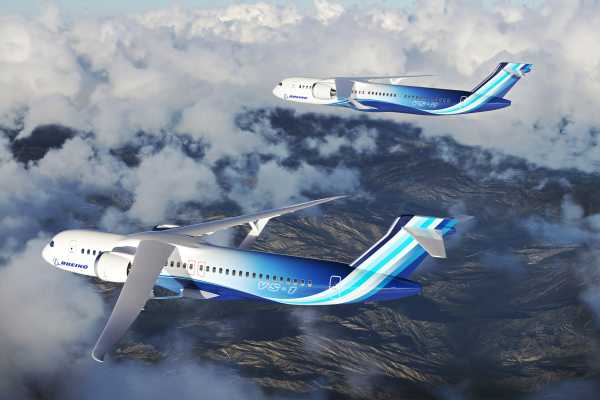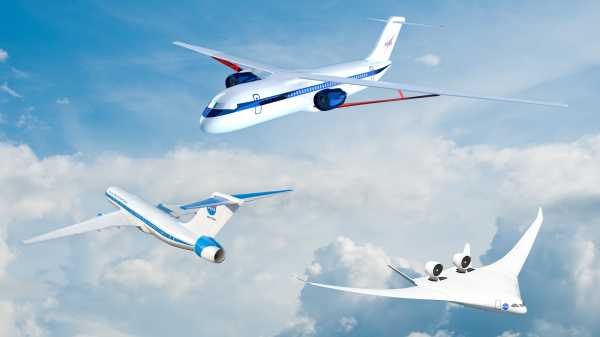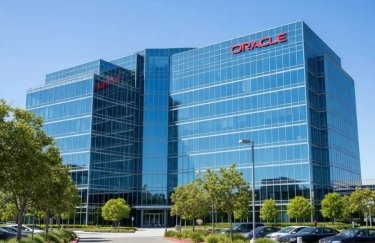
Adam Clark Estes is the editor of Recode by Vox. Prior to joining Vox, Estes covered the intersection of technology and politics at Gizmodo, Vice, and the Atlantic.
This story is part of a group of stories called

Uncovering and explaining how our digital world is changing — and changing us.
After more than 50 years in production, the final 747 is taking to the skies.
Boeing delivered the last 747 ever built to Atlas Air on Tuesday. Aviation enthusiast John Travolta was there and said the plane was the “most well-thought-out and safest aircraft ever built.” Richard Branson said “farewell to a wonderful beast” in a Reuters interview, bemoaning the high fuel costs for transatlantic flights on the jumbo jet. Airlines had a similar attitude, as slowing 747 sales reflected higher demand for smaller, more fuel-efficient planes. In fact, sustainability is on Boeing’s mind as well.
Air travel is a massive contributor to climate change, and it’s getting more popular. Flying accounts for up to 4 percent of greenhouse gas emissions in the United States, and as more and more people fly, the United Nations expects carbon dioxide emissions from planes to triple by 2050. A transatlantic flight produces about a ton of CO2 per passenger, which amounts to about half the carbon footprint a person would produce by eating food for a year. The Boeing 747, which can seat over 500 people, is the third-largest plane in the sky, so you can imagine the environmental cost of keeping the so-called “Queen of the Skies” flying.
Sign up for the newsletter Recode
Thanks for signing up!
Check your inbox for a welcome email.
Email (required)
Oops. Something went wrong. Please enter a valid email and try again.
By submitting your email, you agree to our Terms and Privacy Notice. You can opt out at any time. This site is protected by reCAPTCHA and the Google Privacy Policy and Terms of Service apply. For more newsletters, check out our newsletters page. Subscribe
This isn’t the end of the 747 — existing planes could remain in the air for decades — but it is a pivotal moment for the future of aviation. A couple weeks before the 747’s big send-off, Boeing and NASA announced a major partnership, the Sustainable Flight Demonstrator project, to produce a wacky-looking single-aisle plane that promises to slash fuel consumption for commercial aircraft. The new aircraft looks like a giant glider with long, skinny wings propped up by diagonal struts to reduce drag. It’s called the transonic truss-braced wing concept, and if widely adopted could transform sustainable air travel as we know it.
Unlike cars, you can’t simply bolt a battery onto a plane and make it electric. (Making an electric vehicle is more complicated than that, but you get the point.) Improvements to airplanes happen in small increments over the course of decades. Typically, a single-digit reduction in an aircraft’s fuel consumption would be meaningful. Boeing says the innovations in the new truss-braced wing concept will amount to a 30 percent reduction. That’s exactly the kind of leap NASA wanted to get out of the Sustainable Flight Demonstrator project, which Boeing won.
“If you think that, or have the perception that, aviation hasn’t been working on sustainability or environmentally friendliness, that’s a bad perception because every generation of aircraft that’s come out has been 15, 20, 25 percent better than the one it replaces,” Rich Wahls, NASA’s sustainable flight national partnership mission integration manager, told Recode. “What we’re trying to do now is skip a generation.”
The big idea behind the transonic truss-braced wing concept is an update to the aircraft configuration, or the plane’s architecture. Unlike the low-wing design that dominates the commercial aircraft configuration today, the new Boeing design has wings that stretch over the top of the plane’s tubular body. This reduces drag, but it also allows for a wider variety of propulsion systems, from bigger jet engines to exposed propellers. It’s also fast. The “transonic” part of the concept’s name refers to its ability to fly just shy of the speed of sound, or around 600 miles per hour.
NASA likes this idea so much it’s investing $425 million into the project under a Funded Space Act Agreement. Boeing and other partners will chip in an additional $725 million. Once Boeing builds a full-scale demonstrator aircraft, NASA says it will complete testing in the late 2020s, and if all goes well, the public could see the new technologies in commercial aircraft sometime in the 2030s.

If you squint your eyes, though, the new transonic truss-braced wing concept looks an awful lot like the commercial aircraft you see on runways today. That’s not a bad thing. For one, it’s not a radical redesign — unlike, say, the very odd-looking blended wing X-48 — that might scare off passengers. The similar design also has some benefits for the manufacturing process. But at the end of the day, new aircraft configuration alone won’t make these next-generation planes greener, according to Brent Cobleigh, project manager for NASA’s Sustainable Flight Demonstrator project.
“Lighter-weight materials, better aerodynamics, better propulsion systems, more direct operations,” Cobleigh said, “you need all of those together to squeeze as much efficiency out as we can, to make the biggest impact.”
Because, again, it’s really hard to make airplanes more efficient. And aircraft configuration is just one piece of the puzzle. More efficient propulsion systems and cleaner jet fuel are the other two moving parts that need to fit together. Further down the line, we’ll see designs for hybrid propulsion systems that use both jet fuel and batteries to power a plane. Fully electric planes are already taking to the skies, although it will be decades before we see big battery-powered passenger aircraft. In the near term, hydrogen increasingly seems like a viable replacement for the fossil fuels we currently put in planes. Rolls-Royce and easyJet successfully tested a hydrogen-powered jet engine, the world’s first, just a few months ago.
What we’ll see before those big breakthroughs are more incremental improvements. Just a couple weeks before the NASA-Boeing announcement, for example, Rolls-Royce showed off a new UltraFan propulsion system for plans, which it says offers a 25 percent jump in efficiency and can run on 100 percent sustainable aviation fuel, or SAF, which is a biofuel derived from waste material. Although it’s not a conventional fossil fuel, SAF still spews carbon into the atmosphere, and it’s also in short supply. Some commercial flights already use SAF mixed with conventional jet fuel, and United did a demo last year with a flight from Chicago to Washington, DC, powered by 100 percent SAF. An innovation like SAF certainly is a move in the right direction — what you might call an evolutionary change — but it’s not what’s needed to make air travel as green as it can be.
“The revolutionary change would be to change the energy source, like, if you change to hydrogen or if you did hydrogen fuel cells,” explained Marty Bradley, a sustainable education educator and consultant who worked at Boeing when the company was exploring early truss-braced wing concepts. “That would be that big jump.”
This story was first published in the Recode newsletter. Sign up here so you don’t miss the next one!
Sourse: vox.com





